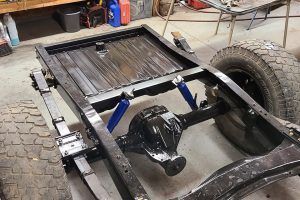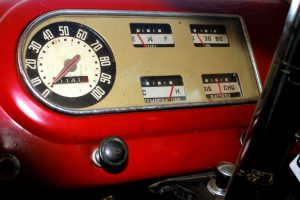If In the 1920s, moonshine runners during the Prohibition era would often have to outrun the authorities. To do so, they had to upgrade their vehicles—while leaving them looking ordinary, so as not to attract attention. Eventually, runners started getting together with fellow runners and making runs together. They would challenge one another and eventually progressed to organized events in the early 1930s. The main problem racing faced was the lack of a unified set of rules among the different tracks. When Bill France, Sr. saw this problem, he set up a meeting at the Streamline Hotel in order to form an organization that would unify the rules. When NASCAR was first formed by France in 1948 to regulate stock car racing in the U.S, there was a requirement that any car entered be made entirely of parts available to the general public through automobile dealers. Additionally, the cars had to be models that had sold more than 500 units to the public. This is referred to as “homologation”. In NASCAR’s early years, the cars were so “stock” that it was commonplace for the drivers to drive themselves to the competitions in the car that they were going to run in the race. While automobile engine technology had remained fairly stagnant in World War II, advanced aircraft piston engine development had provided a great deal of available data, and NASCAR was formed just as some of the improved technology was about to become available in production cars.[citation needed] Until the advent of the Trans-Am Series in 1967, NASCAR homologation cars were the closest thing that the public could buy that was actually very similar to the cars that were winning national races. The 1949 Oldsmobile Rocket V-8 with a displacement of 303 cu in (5.0 L) is widely recognized as the first postwar modern overhead valve (OHV) engine to become available to the public.[14] The Oldsmobile was an immediate success in 1949 and 1950, and all the automobile manufacturers could not help noticing the higher sales of the Oldsmobile 88 to the buying public.[citation needed] The motto of the day became “win on Sunday, sell on Monday”. However, in spite of the fact that several competing engines were more advanced, the aerodynamic and low-slung Hudson Hornet managed to win in 1951, 1952, and 1953 with a 308 cu in (5.0 L) inline six-cylinder that used an old-style flathead engine, proving there was more to winning than just a more powerful engine.[citation needed] At the time, it typically took three years for a new design of car body or engine to end up in production and be available for NASCAR racing.[citation needed] Most cars sold to the public did not have a wide variety of engine choices, and the majority of the buying public at the time was not interested in the large displacement special edition engine options that would soon become popular. However, the end of the Korean War in 1953 started an economic boom, and then car buyers immediately began demanding more powerful engines.
Was this article a help? Consider supporting the Flat-Spot by becoming a Premium Member. Members get discounts with well known retailers, a cool membership packet full of goodies and your membership goes toward helping us upkeep and expand on this great archive.











